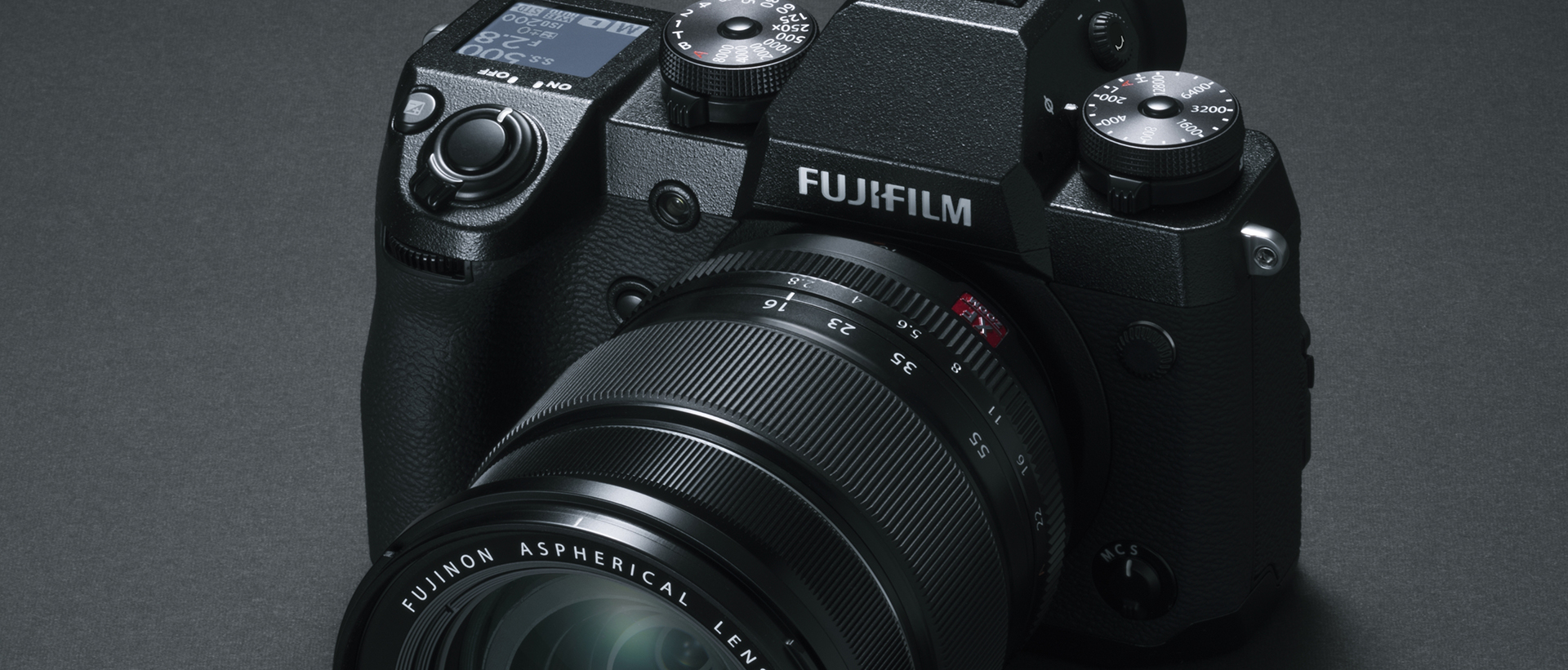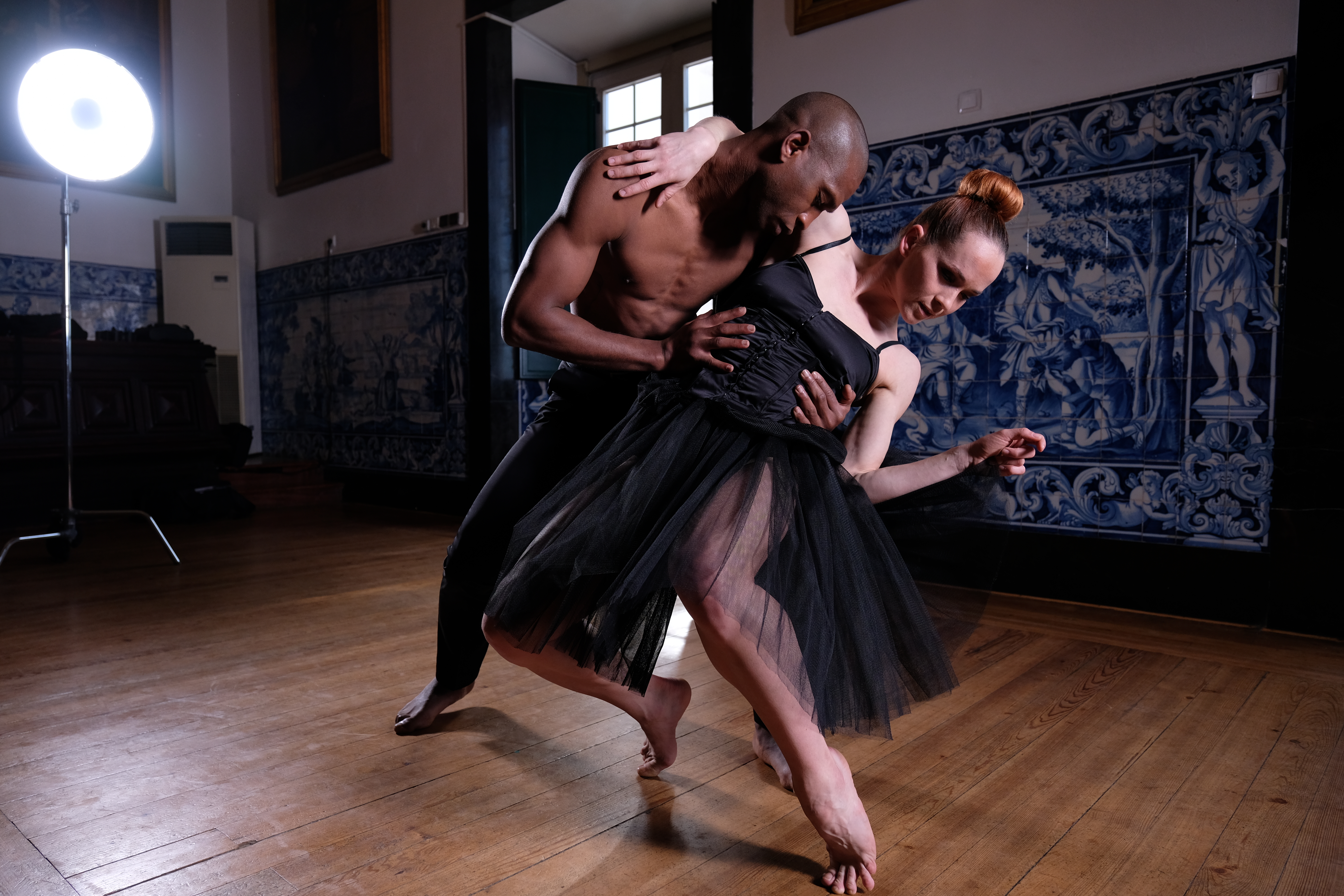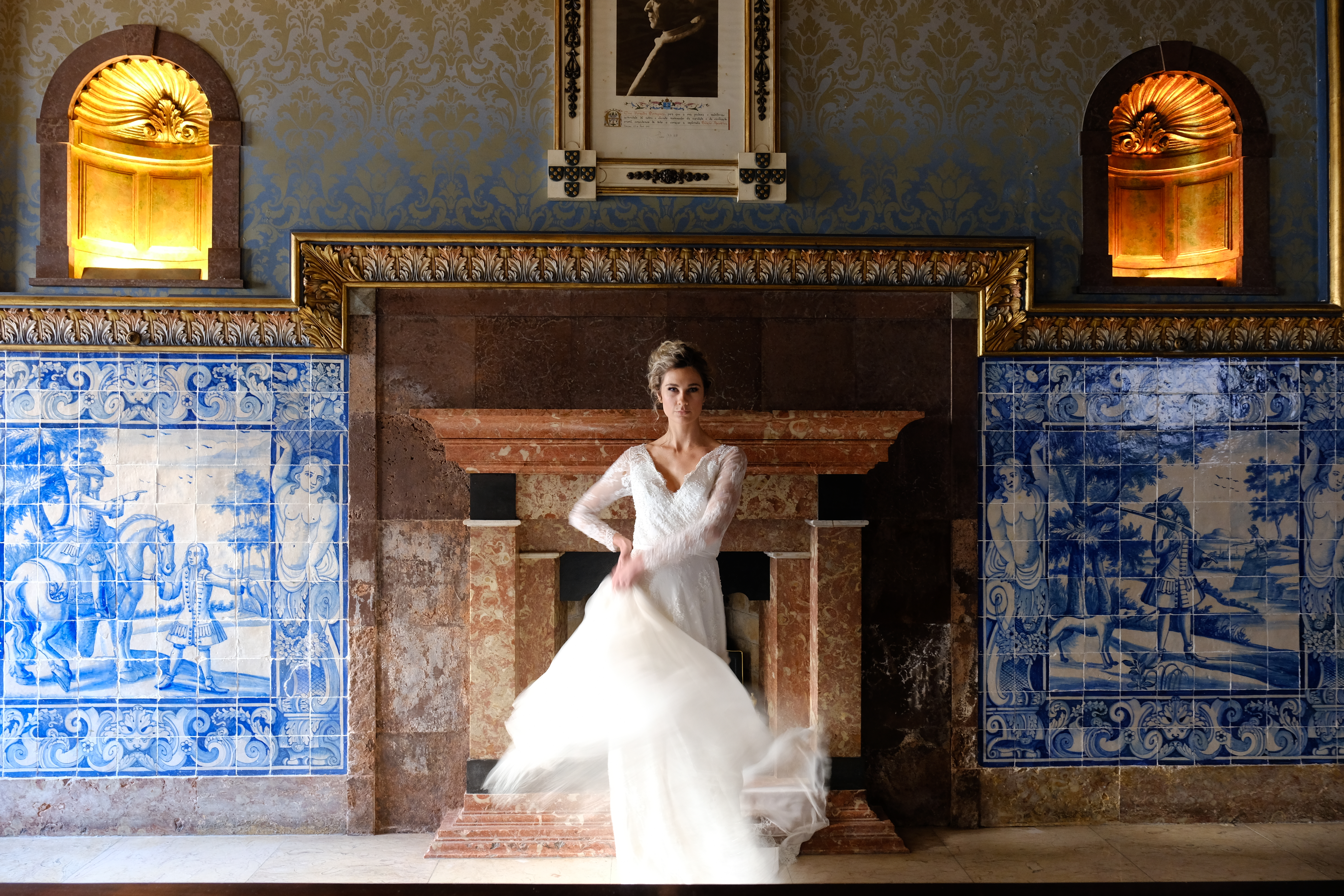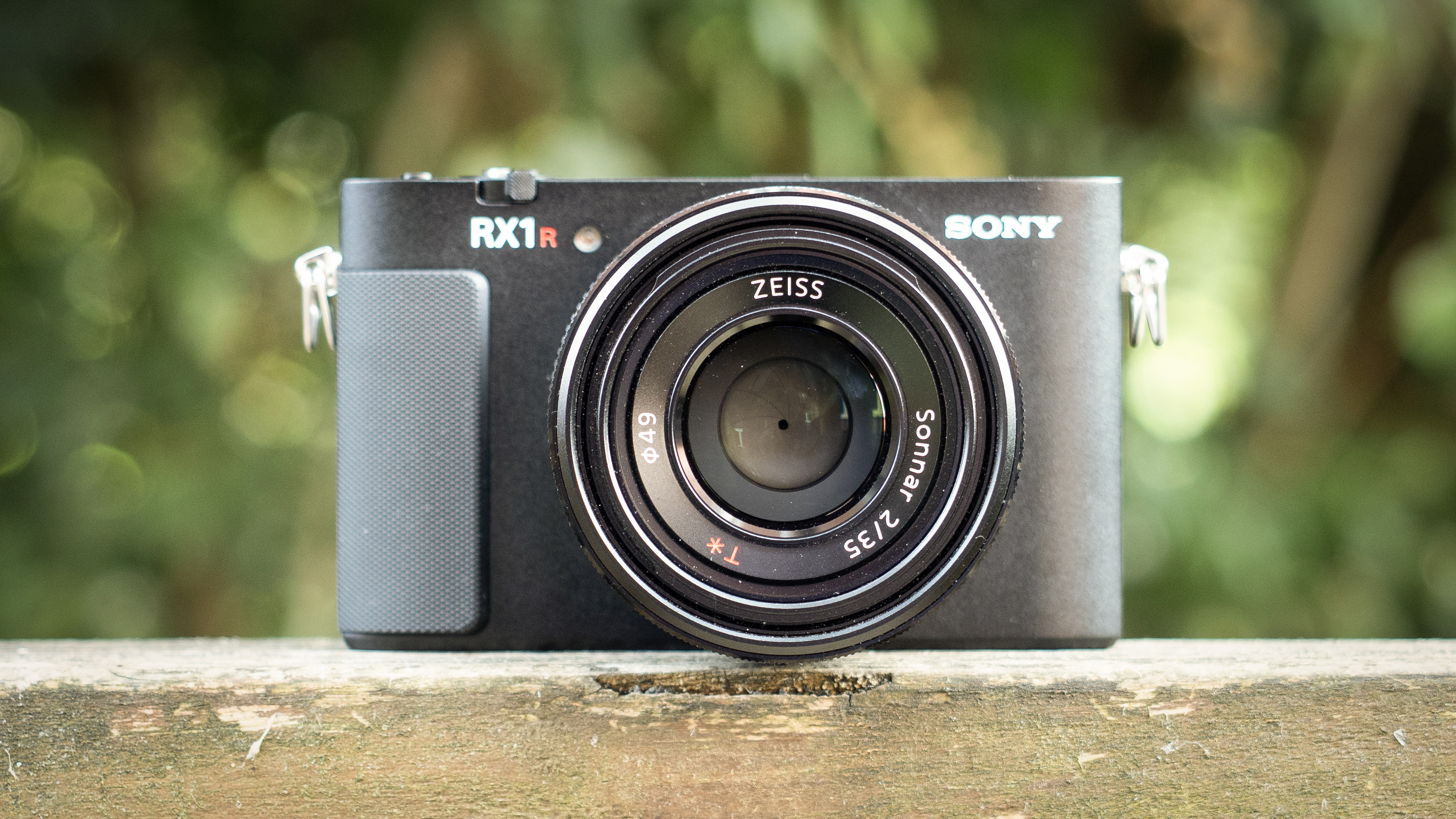Digital Camera World Verdict
Some might be disappointed that the X-H1 appears as little more than a modest upgrade over the X-T2, but Fujifilm's changes are aimed squarely at professionals, and these revisions tick the few remaining boxes that the X-T2 left unchecked. It's tougher and more substantial than the X-T2, while the optional grip makes it a true sports camera. The new in-body stabilisation alone is enough to justify the modest premium over the X-T2.
Pros
- +
In-body stabilisation
- +
11fps with optional grip
- +
Chunky body gives great handling
Cons
- -
A couple of fiddly controls
- -
High-end pricing for APS-C
- -
Same sensor as cheaper models
Why you can trust Digital Camera World
It's been some time since we've had a fresh line of cameras from Fujifilm, whether it's a standalone range or a sub-series within an existing stable. The last one was 2016's medium-format G system, which still only contains one member, the GFX 50S. This makes the arrival of the X-H1, a camera that will sit above the current co-flagship X-T2 and X-Pro2 models in the X range, particularly noteworthy.
Fujifilm X-H1: Features
- 24.3MP X-Trans CMOS III sensor
- X-Processor Pro
- Fujifilm X mount
- 5-axis, 5.5-stop in-body Image Stabilisation system
- ISO 200-12,800 (exp to ISO 100 and 51,200 equivalents)
- DCI 4K to 24p (up to approx. 15min)
- UHD 4K to 30p (up to approx. 15min)
- Full HD to 60p (up to approx. 20min)
- 0.5in OLED viewfinder, approx. 100% coverage, 3.69m dots
- 3in tilting LCD touchscreen, 1.04million dots
- 1.28in top-plate LCD screen
- 8fps (14fps with electronic shutter)
- Eterna Film Simulation feature
- Wi-Fi and Bluetooth
- Flicker reduction mode
- 310-shot battery life
- 139.8 × 97.3 × 85.5mm
- Approx. 673g (including battery and memory card)
The model is "the highest performance camera in the X Series range of mirrorless cameras," according to the firm. Key features include Fujifilm's 24.3MP X-Trans CMOS III sensor and X-Processor Pro engine, both of which we've seen already in the X-T2, X-T20 and X-Pro2, although this time it's teamed up with a new 5-axis in-body stabilisation system. This is a first for Fujifilm, who has traditionally incorporated the feature into its optics, although the two work together to provide up to 5.5EV stops of compensation.
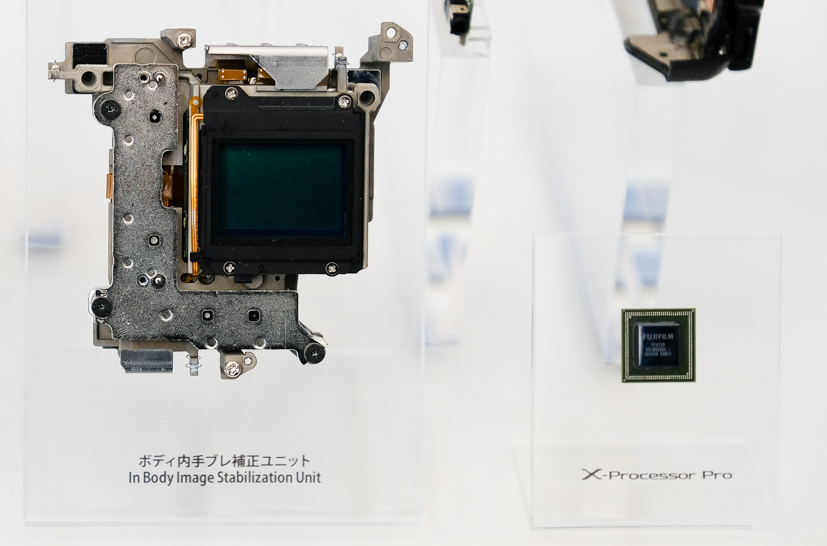
This system makes use of three axial accelerometers, three axial gyro sensors and a specially developed dual-processor, and they work together to perform approximately 10,000 calculations per second. The system is effective with all of Fujifilm's XF and XC lenses. It should also help steady up the camera's 4K video mode, and although Fujifilm is playing down this camera's 4K credentials, on paper it does look like one of the best 4K cameras out there right now.
Fujifilm has fitted the new camera with a 3.69million-dot EVF that has a 0.75x magnification (in 35mm terms) and a 100fps refresh rate, while the 3in tilting LCD screen has a 1.04million-dot panel and is touch-sensitive. Like the X-T2 it also has a sideways tilt-action, which goes to an angle of around 60 degrees. So, unlike regular tilting screens, this one can also work with the camera held vertically.
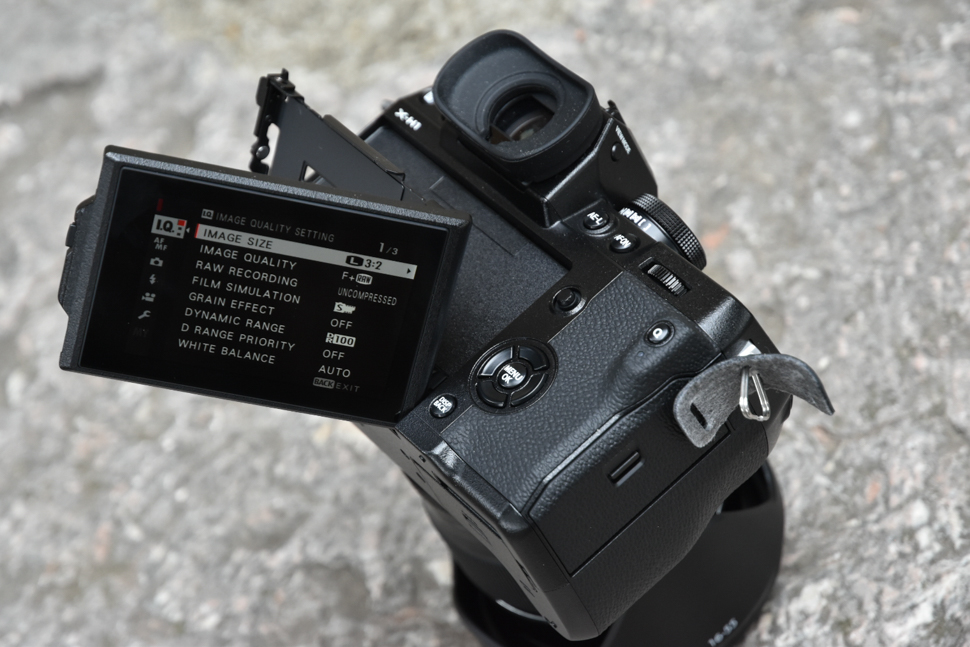
There's a new feature on this camera that you won't find on the X-T2: a 1.28million-dot LCD panel on the top plate that displays key shooting and exposure information. This echoes the styling of the GFX 50S, although it's the first time such a panel has been incorporated on an X-series camera.
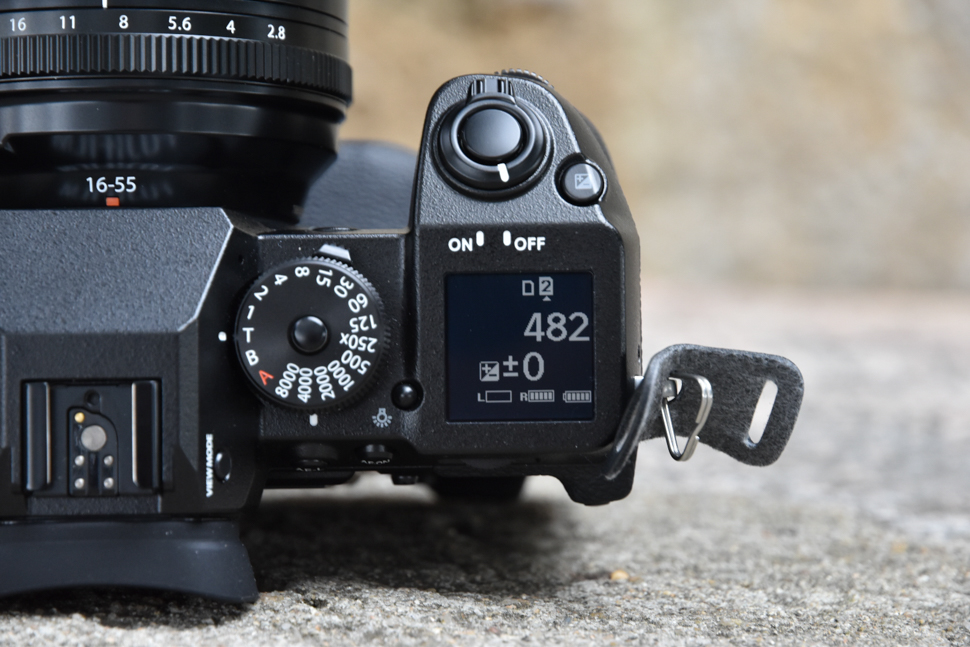
At first glance, the X-H1 doesn't seem to be any more sports-orientated than the X-T2. It shares the same advanced hybrid AF system and the same 8fps continuous shooting speed. This goes up to 14fps with the electronic shutter, but this is really designed for bright light rather than fast-moving subjects, since the sensor scans the frame progressively rather than capture the whole scene instantaneously.
Those intending to use the camera for action, however, will be interested to learn that the X-H1 is compatible with a new VPB-XH1 Vertical Power Booster. In addition to boosting battery life and making portrait-orientation-shooting easier, this also increases the maximum burst rate of the mechanical shutter to 11fps, and also features a headphone port for audio monitoring while recording video.
The best camera deals, reviews, product advice, and unmissable photography news, direct to your inbox!

Fujifilm X-H1: Build and handling
The body is crafted from a magnesium alloy that's said to be 25% thicker than the X-T2's, and has been weather-sealed for protection against the elements. While it more closely resembles the GFX 50S than it does the X-T2, those used to the X-T2 will find the X-H1 very familiar. The menus are essentially the same and the way exposure parameters are adjusted is also very much like what we've seen before. The biggest control layout change for those users is a more defined grip and the 1.28in LCD screen on the top-plate panel.
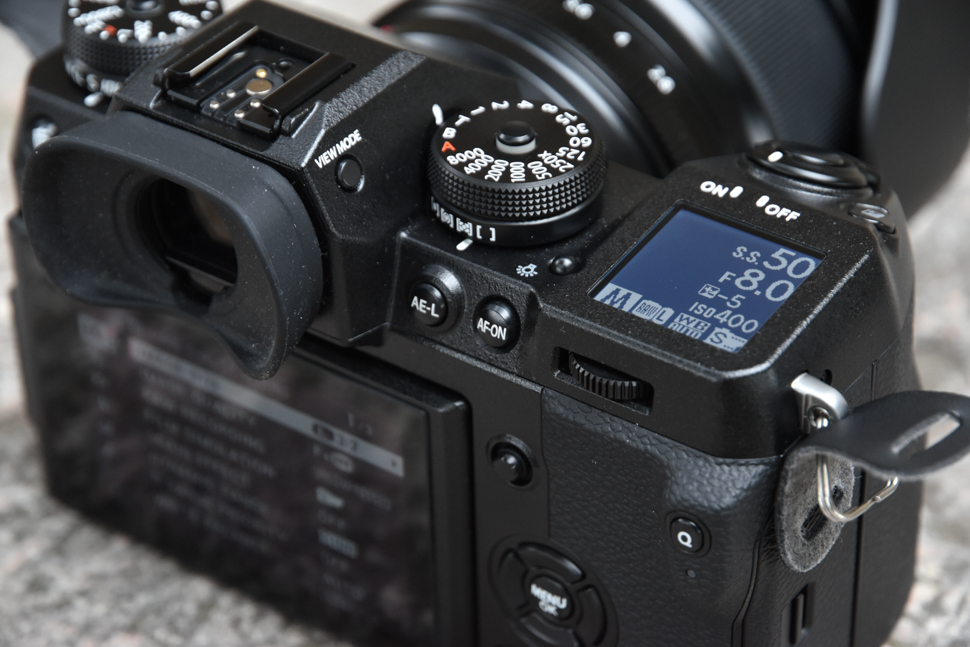
This LCD panel displays the information we would expect: aperture, shutter speed, white balance and so on. There's enough space here to show everything very clearly, and the way in which it can be illuminated is more refined than on many other models, with the black background and grey text changing to black text on a grey background at the press of a button, for as long as you need it to; no tiny green or orange lights on the side that just spring to life for a few seconds here.
It's a great advantage to have this screen here, and the menu system even allows you to change what's shown if you want to filter out a few options. It's particularly welcome as many of Fujifilm's models have somewhat small text displayed in the viewfinder and around the LCD while you're shooting, although we also now have the option to increase the size of this text too, which is very welcome.
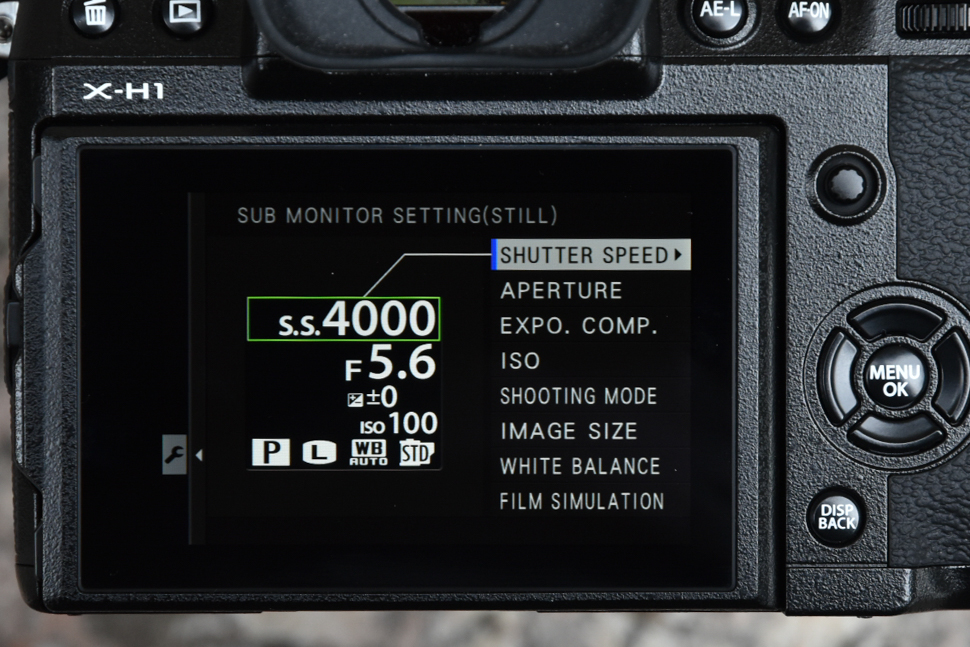
A glance around the rest of the top plate reveals the X-H1 is quite unlike regular DSLRs and mirrorless cameras. Like other higher-end, X-mount Fujifilm cameras, it returns to a traditional control layout with a shutter speed dial on the top plate and a lens aperture ring on the lens itself (though not on all lenses). There's no need for a mode dial, since the regular PASM exposure mode options can be achieved by setting either the lens aperture ring or the shutter speed dial to the 'A' position and adjusting the other manually. Alternatively, you can set both to 'A' for a program AE mode.
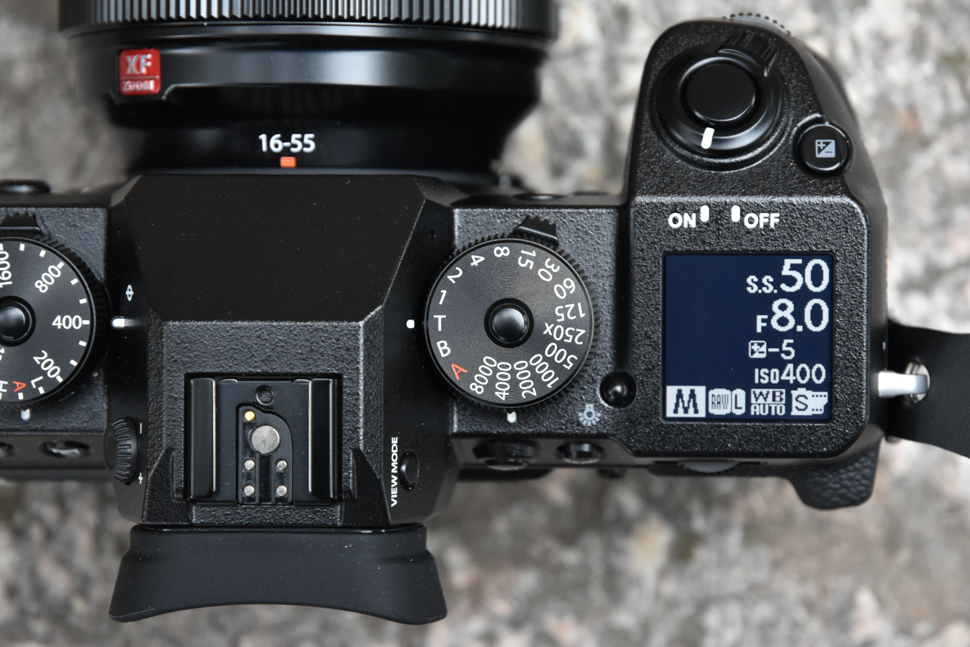
The main LCD maintains the X-T2's three-axis pivoting design, which is especially useful when shooting in a portrait orientation. Once you're used to its movements it's fairly easy to operate, although it can be somewhat fiddly when the camera has its optional Vertical Power Booster grip fitted to its base, as this prevents you from grabbing it from below as you naturally may do.
The screen works well, although it's not always easy to see clearly outdoors in bright light, a criticism that, admittedly, can be levelled at most other cameras. It responds to touch too, perhaps not quite as sensitively as other models straight out of the box, but this is not necessarily a bad thing; the high sensitivity of other cameras' screens can make inadvertently pressing this with a stray finger or your nose easier and thus more annoying.

A more minor complaint is that the screen is attached to the camera through a relatively short arm, and so part of it can be obscured by the eyecup when viewed from above. Even so, the fact that it can be adjusted as freely as it can is a huge bonus for creative compositions.
Both front and rear command dials move easily and click into the body to perform certain useful functions (such as instantly zooming into the image upon playback). As usual with dual-action dials like these, it's possible to click these accidentally when you're simply trying to turn them, but the X-H1's dials have a pretty firm action, so this doesn't end up happening too often in practice.
The biggest surprise comes with the shutter release. For a start, it is extremely light – much lighter than any other camera we can remember testing – and it could be some time before your trigger finger adapts to the very light touch needed to half-press the button for focusing, as well as to the very slight extra pressure needed to fire the shutter. Until then, you're likely to fire off quite a few shots by accident.
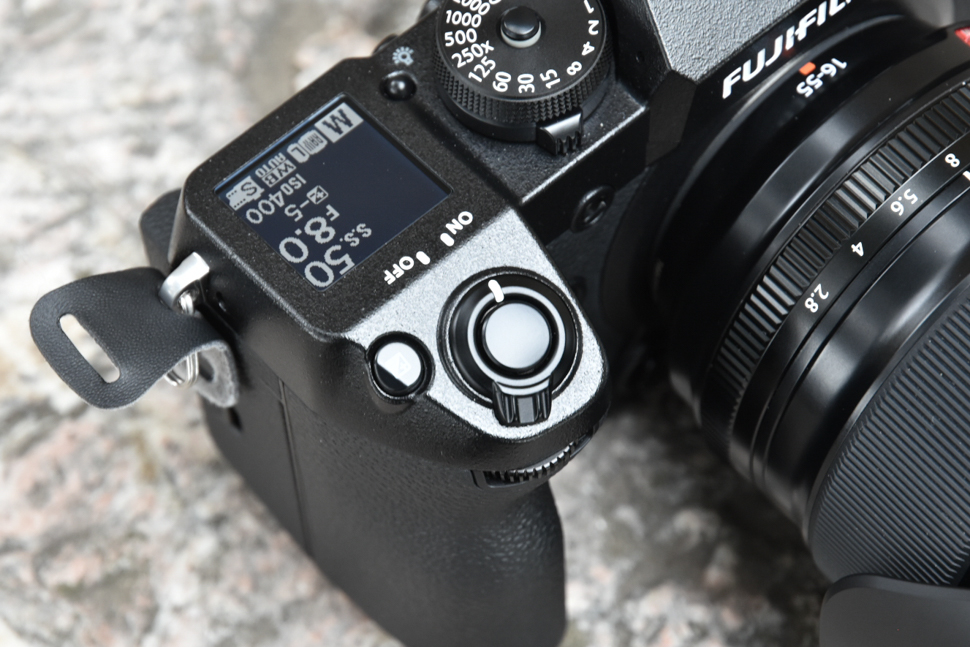
The second surprise is the uncanny quietness of the shutter. Fujifilm says it has incorporated a new shock-absorption system for "almost silent" operation. We've heard this kind of claim from camera makers many times before, but this time it's true: the X-H1's shutter action is not truly silent, but it's way softer and quieter than any mechanical focal plane shutter should be!
With the exception of an exposure compensation control, which has been ousted by the top-plate LCD, the camera's top plate bears the same dial/collar arrangement as the X-T2. So, we get an ISO dial that has a drive mode collar at its base, together with a shutter speed dial with a metering collar underneath it on the other side of the viewfinder.
The locking buttons in the centre of the two dials prevent any accidental movement, which is particularly useful as the collars follow those on the X-T2 in being a little fiddly, which makes it easier to knock any unlocked dials out of line as the collars are adjusted. If you're used to this setup from previous models, or you don't tend to adjust metering and drive modes too frequently, this shouldn't be an issue.

Otherwise, the X-H1 is a particularly comfortable camera to hold and operate, with the closest thing we've had to DSLR-like handling from the X-series yet. There's ample room on the back to comfortably rest your thumb and hand, and plenty of rubber used on the exterior panels, while the deep grip makes the camera a more fitting host body for larger and/or heavier lenses (such as the XF16-55mm F2.8 R LM WR). If you're coming from a DSLR, you should find the transition relatively painless.
Fujifilm X-H1: Performance
The camera's autofocus system is as comprehensive in its specs as we would expect, although Fujifilm claims to have made changes for accuracy and speed over previous models. 60 different data analysis points are now used to fine-tune accuracy and tracking performance, with the camera calculating three different types of phase detection in each area to work out the best focus point to use. According to Fujifilm, this has allowed low-light phase-detection to go from -0.5EV on the X-T2 to -1EV here, and for lower-contrast and/or higher-frequency subjects to be identified more easily than before.
The X-H1's autofocus system looks complex but it's actually quite straightforward. You can choose from single-point autofocus, zone AF (where you change the size and position of the zone) and wide-area AF. You switch between single-shot AF, continuous AF and manual focus with a switch on the front of the camera, and in continuous AF mode, the wide-area AF option becomes a tracking mode.
Tested with Fujifilm's 'red badge' XF 16-55mm f/2.8 R LM WR lens, static autofocus speeds are very fast. The lens's AF actuators are very quiet, and if you accidentally give the super-light shutter release a full press instead of a half press, you might think the camera has fired without focusing. It hasn't: it's just very fast, and very quiet.
In its continuous shooting mode, the autofocus system keeps up very well, both for single-point, zone and wide-area tracking, though in its tracking mode, very erratic subject movements can cause the autofocus to lose contact with the subject.
A combination of electronic viewfinder blackout and a tiny amount of lag means that it might not be quite as easy to follow a fast-moving subject as it is in the optical viewfinder of a high-speed DSLR. That said, the camera's AF system is still a sound all-round performer.
The image stabilisation system also appears to be very effective, with images captured at moderate focal lengths in single-figure shutter speeds still maintaining good sharpness. In our tests with the unstabilised, aforementioned 16-55mm lens, we achieved around 3-4 stops of shake compensation, with reliably sharp images taken handheld at 1/8 sec at 55mm.
The X-H1's exposure system offered no surprises during our testing, working perfectly well in its default multi-pattern mode for most shots. You don't have to dip into the menus to change the metering mode because this is set on a physical dial below the shutter speed ring. However, to apply EV compensation, you have to press a small button to the right-hand-side of the shutter release, which is fiddlier than on other Fujifilm models like the X-T20 and X-T2, which have a dedicated exposure compensation dial on the top plate.
The X-H1's regular JPEGs and Raw files offer good dynamic range, but its secret weapon – common to all the Fujifilm models – is its expanded dynamic range modes, which can be set to 200% or 400% or left on Auto. Expanding the dynamic range pushes up the base ISO level by 1-2EV, which some photographers might not like, but the payback is Raw files with a huge range of tonal information. It's worth repeating that the dynamic range is expanded in the Raw data – it's not just the quick in-camera JPEG dynamic range fix used by many other camera makers.
The sharpness and fine detail from the X-H1 is as good as you could hope for from a 24MP APS-C sensor, aided by the lack of an optical low-pass filter over the sensor and the quality of Fujifilm's X-mount lenses. Like Olympus and Panasonic, Fujifilm bakes lens corrections into the Raw files rather than just offering them as part of the JPEG processing. As a result, when you open your Raw files in Adobe Camera Raw, they're already corrected. If the lenses do produce any chromatic aberration or distortion, it's taken out before you ever get to see it.
Noise levels are equally impressive. Even at ISO 6400, real-world images still look remarkably sharp, textured and free from noise. Just a few years ago, we wouldn't have dreamt of shooting at these sensitivities with an APS-C sensor, and high-ISO image quality like this is one of those slow revolutions that we now take for granted.
When you factor in Fujifilm's excellent Film Simulation modes – the black and white ACROS mode is especially impressive – you have a camera that doesn't just perform well as a device but produces first-rate images too.
Lab tests
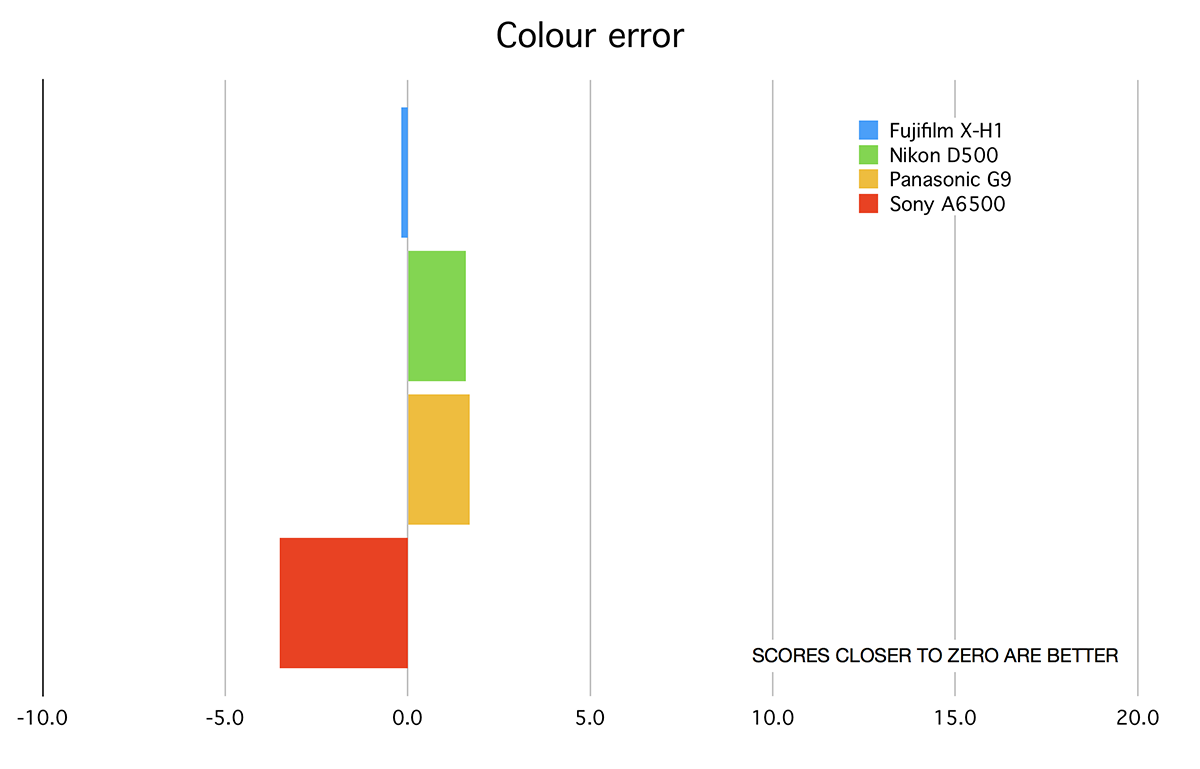
Colour error
We compared the X-H1’s lab results with those from three rival cameras: the Nikon D500, Panasonic G9 and Sony A6500. It produced the lowest colour error in this group.
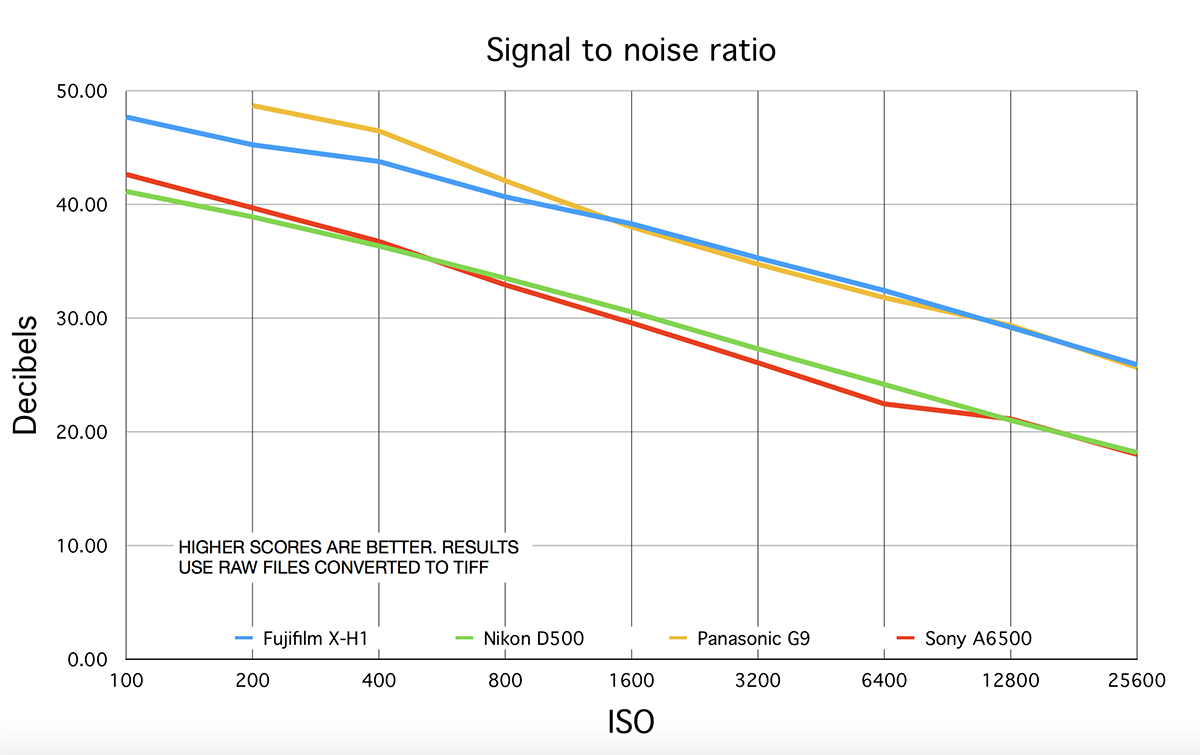
Raw signal-to-noise ratio
Interestingly, the X-H1 and Panasonic G9 come out on top for noise. The G9 is very slightly better at low ISO settings – surprising, given its smaller Micro Four Thirds sensor.

Raw dynamic range
Again, the Panasonic G9 is another surprise winner in this test. The Fujfilm X-H1 is a close second, tying very closely with the Nikon D500 for dynamic range.
Fujifilm X-H1: Verdict
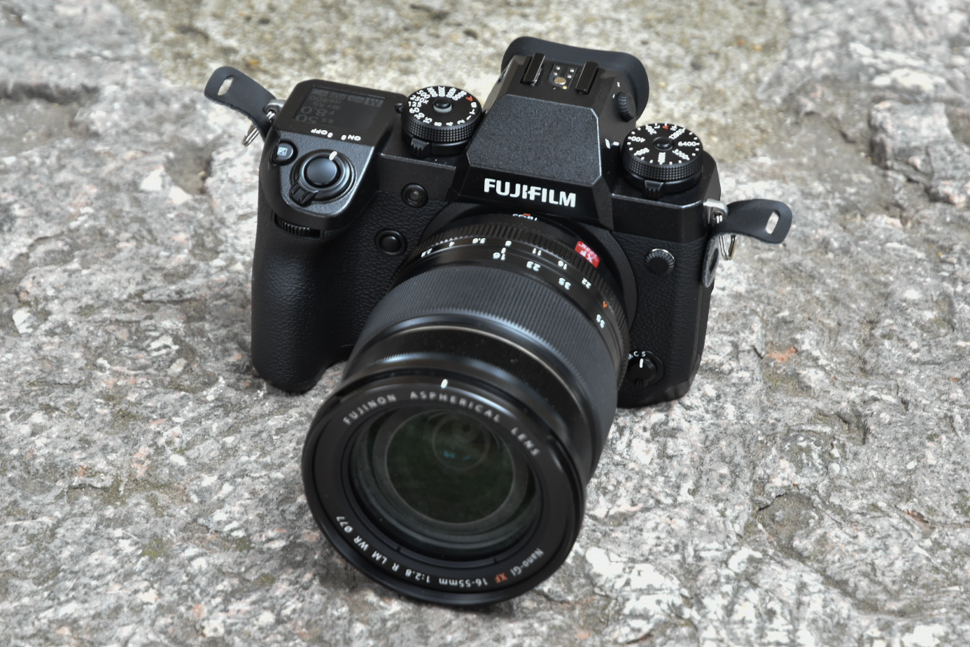
With a weather-sealed body that's larger and sturdier than the X-T2's; the advantage of in-body image stabilisation; and a healthy range of control over video recording, it's clear that Fujifilm is aiming the X-H1 towards a high-end and professional audience. Indeed, Fujifilm credits the professional market for driving the success of mirrorless cameras.
It's a camera that's ideal for those using longer X-series lenses for wildlife, sports or nature who find the X-T2's body a little small, together with anyone who wants to shoot in low light with the security of in-body stabilisation. This feature alone is highly useful and does make the X-H1 stand out against other X-series models that rely on lens-based optical stabilisation, which is not provided on all X-mount optics.
Of course, strong and keenly priced rival models that already offer this feature in-camera mean that, to some extent, Fujifilm is playing catch-up here. Each rival has attracted something of a niche audience with their own models, with Panasonic focusing more on video-recording capabilities and Sony's ace card being the draw of the full-frame sensor inside its A7-series cameras.
But the X-H1 makes a lot of sense, especially for those who have already invested in the X-mount system or are swayed by its design, image quality and lenses. Given what it does, the X-H1's price actually looks very reasonable. It doesn't cost a great deal more than the X-T2, and investing further in the optional battery grip turns the X-H1 into a fast, powerful and – above all – affordable flagship camera with great strengths and comparatively few weaknesses.
Fujifilm X-H1: Competition
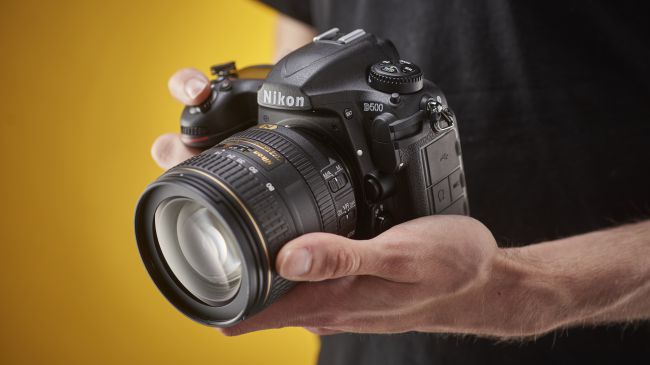
Nikon D500
Like the X-H1, the D500 is a flagship APS-C camera aimed at enthusiasts, experts and professionals, with the same blend of continuous shooting speed, sophisticated autofocus, 4K video and rugged build. It really comes down to preference – mirrorless or DSLR?
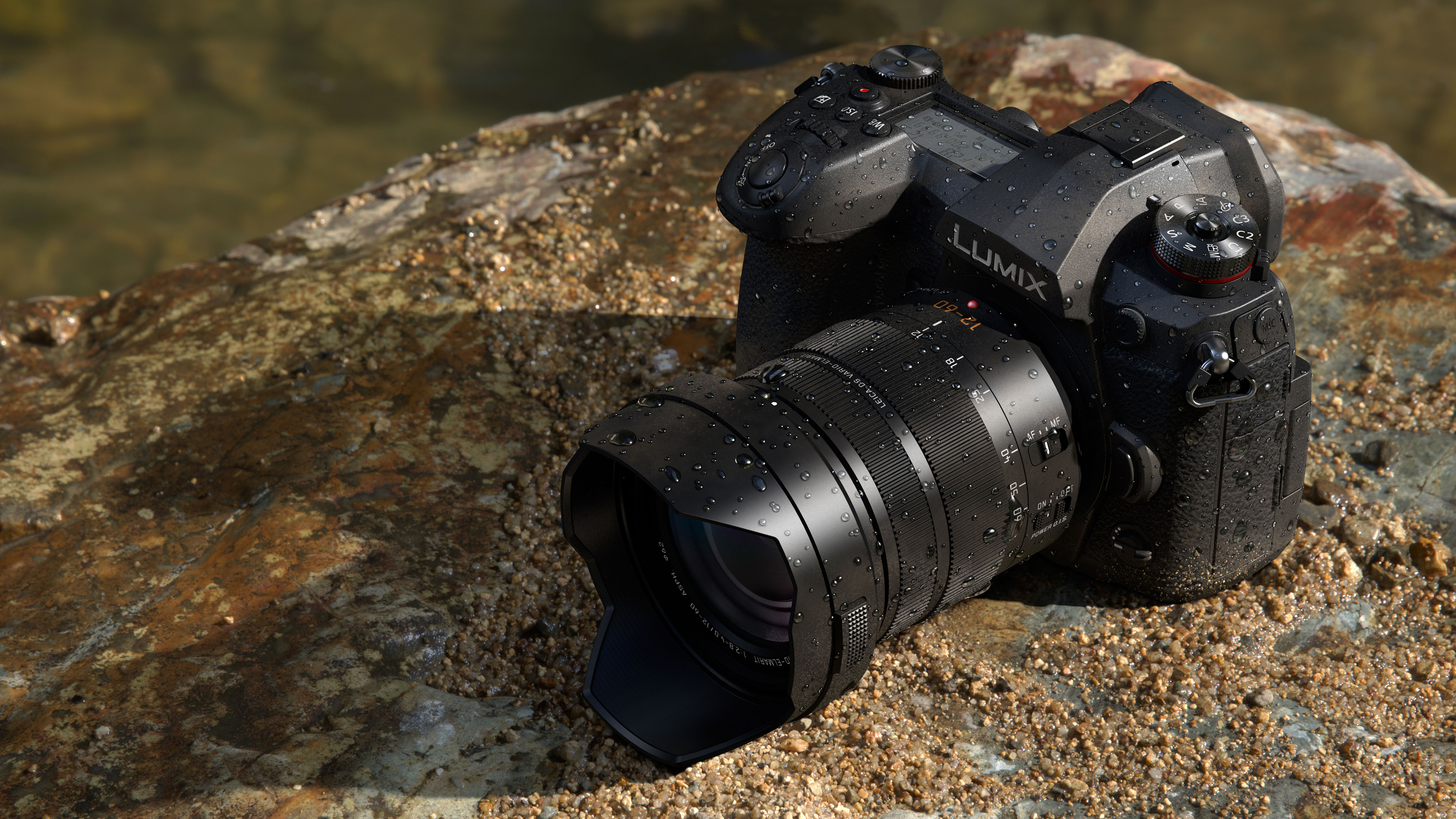
Panasonic Lumix G9
The Panasonic's Micro Four Thirds sensor area is roughly 30% smaller than the X-H1's, but it makes up for it with ultra-high-speed continuous shooting, 4K photo modes, 4K video and decent handling. Read our full review here.
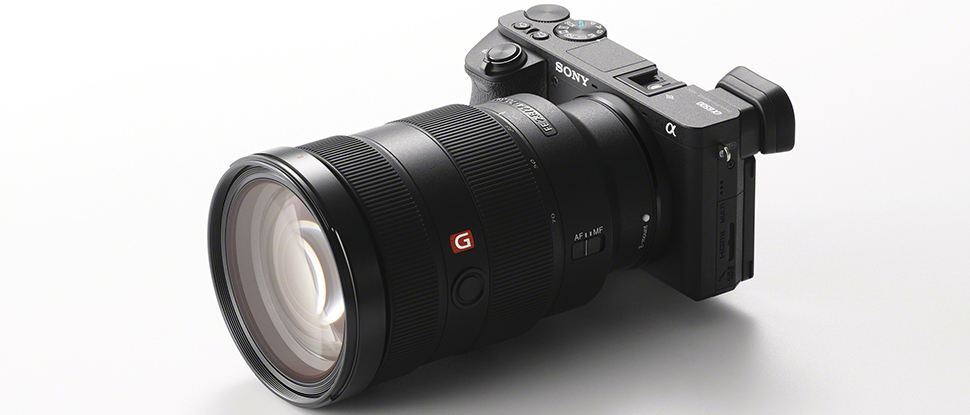
Sony A6500
On paper, the A6500 is a good match for the X-H1, but cheaper and smaller. In practice, its small body makes it handle awkwardly with big lenses and it's doesn't feel as snappy in its burst mode. Read our full review here.
Fujifilm X-H1: Specs
- 24.3MP X-Trans CMOS III sensor
- X-Processor Pro
- Fujifilm X mount
- 5-axis, 5.5-stop in-body Image Stabilisation system
- ISO 200-12,800 (exp to ISO 100 and 51,200 equivalents)
- DCI 4K to 24p (up to approx. 15min)
- UHD 4K to 30p (up to approx. 15min)
- Full HD to 60p (up to approx. 20min)
- 0.5in OLED viewfinder, approx. 100% coverage, 3.69m dots
- 3in tilting LCD touchscreen, 1.04million dots
- 1.28in top-plate LCD screen
- 8fps (14fps with electronic shutter)
- Eterna Film Simulation feature
- Wi-Fi and Bluetooth
- Flicker reduction mode
- 310-shot battery life
- 139.8 × 97.3 × 85.5mm
- Approx. 673g (including battery and memory card)
Read more: 10 tips on getting the best out of your Fujifilm camera
The sister print publication to this website, Digital Camera Magazine is Britain's best-selling photography publication – and it can also be purchased outside the United Kingdom as Digital Camera World.
Digital Camera Magazine is packed with more expert advice and more inspirational images than any other title, with the sole aim of helping you become a better photographer. Every issue we also bring you a selection of great gifts which are designed to help you get more from your photography – everything from tips cards and cheat sheets to free software and bookazines.
In addition to inspirational images, interviews, projects, mini tests and tutorials, each issue is packed with news, reviews and comparisons, as well as photographer vs photographer shootouts and head-to-head challenges using the best photo editing software.
The magazine is captained by Editor Niall Hampton.
